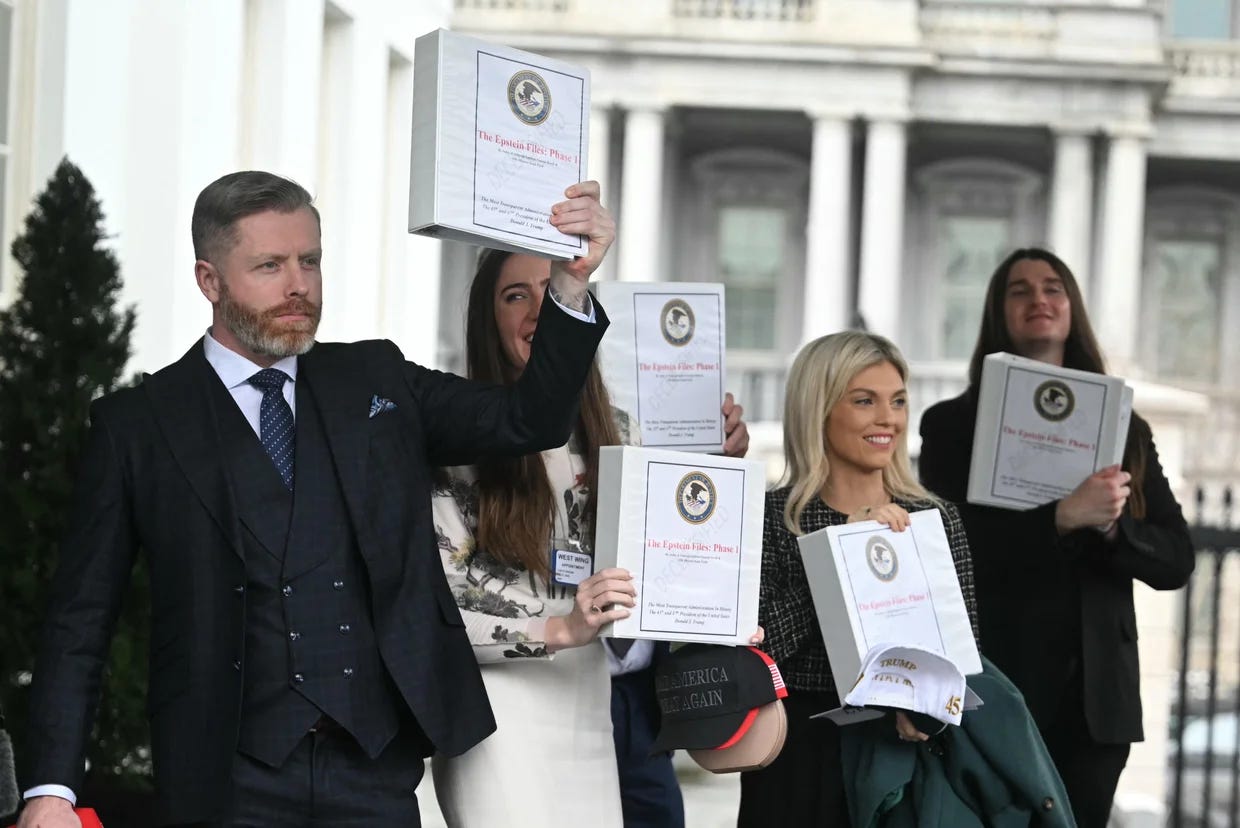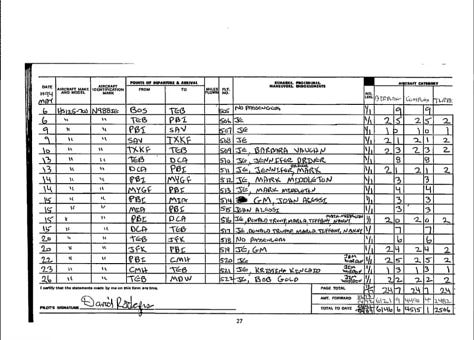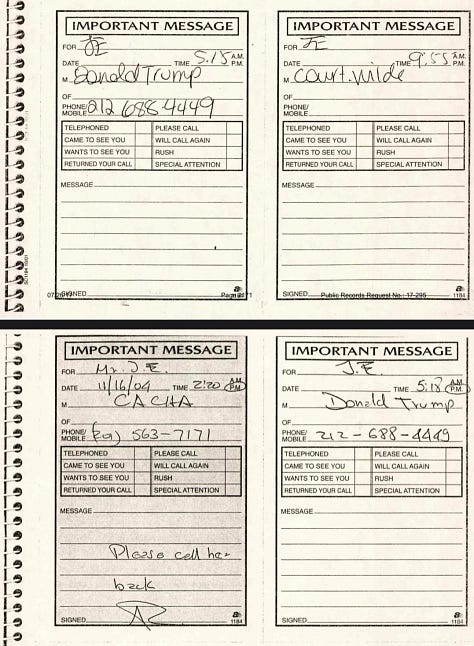Predator-in-Chief: The Docket of Trump’s Crimes, and America’s Burial of the Evidence
A two-part investigation into the sexual misconduct record of Donald J. Trump—twenty-five women, civil verdicts, Epstein ties, and the American institutions that helped him bury it all.
Part II — The Record He Couldn’t Erase
IT IS THE FATE of archives in despotic hands to smolder in silence. Not in fire, which at least declares itself, but in the smog of redaction, where erasure arrives dressed as protocol and ash leaves no fingerprint. Somewhere beneath the Department of Justice’s marble facade lies a cold vault of tapes, affidavits, flight logs, hard drives, witness statements, and names. What entropy did not claim, we buried by choice. What could not be denied, we refused to confront. And what should have shattered institutions was quietly filed under “routine”—a burial shroud stretched over the decomposing corpse of justice.
The raids on Jeffrey Epstein’s properties yielded over 10,000 digital files—many in pristine 4K resolution—alongside labeled DVDs cataloged by name and date, stacked like trophies in a predator’s library. Surveillance cameras captured every room—in bedrooms, bathrooms, corridors, and massage rooms across both coasts and islands—not for security, but, one suspects, for leverage. We know these recordings exist. The FBI seized them, catalogued them, reviewed them. Their contents, we are told, were horrific. Pam Bondi herself admitted they included “tens of thousands of videos” involving Epstein, “children, or child porn.” No one is asking for them to be released. They shouldn’t be. But the indictment begins where the footage ends. The very existence of these tapes is a matter of record. And with that record comes another certainty: the FBI, if competent at all, used them to construct a working list of potential co-conspirators—built from flight logs, phone books, surveillance footage, testimony, email chains, and wire transfers. Epstein was a monster, but he wasn’t stupid. He didn’t keep notes on a criminal conspiracy. There was no folder labeled Client List, no spreadsheet titled Powerful Men Who Like Underage Girls.xls. But the government had every tool necessary to infer what he never needed to write down. And yet, since his death, not a single client named. Not a single co-conspirator charged—beyond the woman convicted of trafficking to men with no names. Not a single official compelled to explain the tapes that vanished into institutional ether. The silence now hums like a powerline over a mass grave—steady, indifferent, and hot with the energy of everything buried beneath it. The evidence exists in negative space, outlined in chalk by a country that refuses to exhume what it cannot bear to admit.
The Department of Justice, eager to quell disbelief, released nearly 11 hours of grainy surveillance footage from the night Epstein died—offered up as definitive proof that the man died by suicide. But the camera wasn’t trained on his cell. It was fixed to a lower tier, aimed down the corridor, and offered no view of the death scene itself. More damning still, the footage contains a conspicuous jump: a one-minute, two-second gap beginning at 11:58 p.m.—the minute before Epstein’s reported time of death. When pressed, Pam Bondi insisted the missing minute was routine, the result of a nightly system reset: “Every night the video is reset, and every night should have the same minute missing.” It is a rare prison where the surveillance system malfunctions on cue. Rarer still the raw footage whose metadata reveals post-capture edits—missing frames, corrupted timecode, and compression anomalies incompatible with a direct system rip. The DOJ released a file altered in both form and function—engineered to obscure rather than reveal, stripped of evidentiary integrity, and polished into an artifact of institutional narrative, not forensic truth.
And while the Bureau of Prisons swore by suicide, Dr. Michael Baden—the former chief medical examiner of New York City, who observed the autopsy—said the wound on Epstein’s neck was far too narrow for a bedsheet. The mark was dead center, not beneath the jawline as in typical hangings—consistent, he said, with manual strangulation by wire or cord. Blood stained the neck, but not the ligature. “I think that the evidence points more to homicide than suicide,” Baden later concluded. The bed was stripped. The timeline closed. And the nation moved on as if closure were the same as truth.
In February 2025, 15 right-wing influencers emerged from the White House grinning like game show contestants, each clutching a glossy binder labeled “The Epstein Files: Phase 1”—as if the anatomy of a criminal empire could be laminated and filed under tabbed dividers. The binders were distributed with great fanfare by Attorney General Pam Bondi, under the watchful gaze of President Trump, FBI Director Kash Patel, and Vice President J.D. Vance, in what was billed as a revelatory act of transparency.

But instead of indictments, there were indexes. Instead of evidence, ephemera. The contents were insultingly familiar: Epstein’s publicly available flight logs, the well-worn “little black book,” a smattering of recycled court filings—all readily available online and, in some cases, sold in airport paperbacks. Influencer Liz Wheeler, blinking into the anticlimax, confessed, “That’s not what’s in [the folder].” Representative Anna Paulina Luna, who chaired a House task force on Epstein-related declassification, called the stunt a “ploy for media attention” that served only to “obscure critical evidence.” If anything had been declassified, it was the theatricality of impunity.



Kash Patel and Dan Bongino—podcast demagogues turned federal inquisitors—spent years vowing they would expose Epstein’s network, if only their crusade against the cover-up ended with them holding the shovel. In 2025, they got their wish: Patel as FBI Director, Bongino as his deputy. But when the burial was made official—when the Justice Department issued its final memo denying a client list, shuttering the investigation, and sterilizing the records—they stood at the helm of the bureau that sealed it shut. Bongino, once a sermonizing firebrand, didn’t even show up to work the following Friday. After a screaming match with Attorney General Pam Bondi over the handling of the Epstein files, he was reportedly considering resignation. Truth, it turned out, had always been bait. Power was the switchblade. They stormed the gates of the archive only to weld the vault shut from the inside—curators of the very silence they vowed to shatter.
Before Epstein’s death was sealed in concrete, it was swaddled in the silk of official discretion. The first great vanishing act took place in 2008, when Alexander Acosta—then U.S. Attorney for the Southern District of Florida—brokered the most notorious non-prosecution agreement in modern American history. The outcome functioned as diplomatic immunity for predators by and through the machinery of American justice. Despite a police investigation identifying dozens of underage victims and recommending felony charges for sex crimes against minors, Acosta rerouted the case into a backroom plea. Epstein served just 13 months in a county jail—on state charges of solicitation—granted work release six days a week, allowed to return each night to a private wing of his cell block. But the real obscenity lay in the footnotes: the agreement granted federal immunity to “any potential co-conspirators,” effectively shielding an entire network of enablers from future indictment. Victims were not notified. The deal was kept secret. And in 2019, a federal judge ruled that Acosta’s office had violated the law by concealing it from the very people it claimed to protect. When the scandal resurfaced, Acosta—by then Donald Trump’s Secretary of Labor—defended the bargain as necessary, claiming the case might have collapsed without it. Then he resigned. But the damage had metastasized. Epstein had already become something far more dangerous than a criminal. He had become a precedent. And the next man to inherit that precedent would make the burial permanent.
Bill Barr, the Houdini of institutional misconduct, deserves his own monument in this necropolis of evidence. Appointed by Trump in 2019, Barr presided over the collapse of the Epstein case—issuing stern declarations of disbelief after Epstein’s death, only to then endorse the suicide ruling with the deference of a state priest. Under his tenure, the Department of Justice sealed the seized surveillance files, indicted Ghislaine Maxwell but never compelled her cooperation, and assured the public—without a hint of irony—that no other defendants would be named. Prosecutors under Barr’s command admitted to deleting the footage of Epstein’s first suicide attempt “by accident” and recovering other critical surveillance in corrupted form. Chain-of-custody protocols—bedrock to any serious investigation—were disfigured. Hard drives were never logged publicly. Surveillance footage remained sealed, unseen in court, and withheld from congressional oversight—its contents too incriminating to surface and too illicit to share. And internal sources confirmed that material had gone missing. In any functioning court, such malpractice would render the remainder fruit of the poisonous tree: tainted, inadmissible, and legally inert. What better way to vanish a scandal than to erode its evidentiary spine?
And Epstein was not the only name Barr helped bury. He intervened to reduce Roger Stone’s sentencing after career prosecutors issued their recommendation—prompting all four to resign from the case in protest. He moved to dismiss charges against Michael Flynn, despite Flynn’s sworn guilty plea, and with such conspicuous timing that even the presiding judge questioned the DOJ’s motives. He redacted and suppressed entire passages of the Mueller Report, misleading the public with a summary so tendentious, so distorted that a federal judge later declared it lacked credibility. He oversaw the investigation’s abrupt closure and presided over a Department of Justice that behaved less like a law enforcement body than a political laundering service—tasked not with justice but with stain removal. Again and again, Barr embalmed accountability in layers of legality—draining the bloodstream of justice, sealing the vaults, and bleaching the record clean. Under Barr, the Epstein files were treated like nuclear runoff—encased in a sarcophagus of redactions and sealed chain-of-custody, lest exposure burn the wrong names.
And above them all, looms: Donald J. Trump. The only man whose fingerprints are on every rung of this decaying ladder. He wished Maxwell “well” at a White House press conference. He installed Barr. He elevated Bondi. He promoted Patel and Bongino. It was his administration that sat on the tapes, sealed the evidence, and declared the case closed. And still, his followers—wide-eyed with the fervor of betrayed pilgrims—claim they are waiting for “the list.” That he promised them disclosure. That any day now, he’ll unlock the vault. But what they won’t consider—what they will themselves not to see—is that the list, if it ever existed, would indict him first. He appears in Epstein’s flight logs at least eight times, including three flights with Epstein himself. He was photographed and filmed alongside Epstein for years. Epstein once called him his “closest friend.” Trump was accused in court filings of raping a 13-year-old girl alongside Epstein. He appointed Alexander Acosta—the very man who brokered Epstein’s non-prosecution deal—to Secretary of Labor. He installed William Barr, son of the Dalton headmaster who gave Epstein his first job, as Attorney General. He named as Commerce Secretary Howard Lutnick—Epstein’s neighbor on East 71st Street. The architecture is unmistakably Trump—each hallway built, named, and lit under his direction. The path winds through his appointments, echoes with his words, and ends at the seat he never relinquished. The edifice of denial rests on foundations he poured—fortified with loyalty, secrecy, and power.
Still, the stories rise—unpaid, untried, unhealed. Jessica Leeds remembers being groped on an airplane: “It was like he had 47 arms—like an octopus.” Rachel Crooks, a Trump Tower receptionist, says he forcibly kissed her on the mouth. Tasha Dixon recalls him walking in on topless teens at the Miss USA pageant. Natasha Stoynoff, on assignment at Mar-a-Lago, recalls he shoved her against a wall and forced his tongue into her mouth. Jessica Drake alleges he kissed her and two other women without consent. Stacey Williams claims he groped her in the presence of Jeffrey Epstein. Mariah Billado, then a teen contestant, remembered Trump entering the changing room and announcing: “Don’t worry, I’ve seen it all before.” The details change. The dynamic does not. Each story a flare ignored. Each woman, a ledger uncashed.
So where does that leave us? With a dead man in a locked cell. A convicted madam with no clients. A hard drive of digital evidence sealed in procedural ice. And a man still sitting behind the Resolute Desk while the women he molested watch justice dissolve from a distance. The United States did not lose this case—it bled it. It dressed the wound in red tape and called the hemorrhage closure. If evidence could speak, it would scream. But we have learned, with cruel repetition, that screams only matter if the accused is powerless.
And Trump? He’s the only man alive who touched every chapter of this atrocity—and walked away holding the pen.







Wow! This really connects all the dots. So much I didn’t know. These need to be released!!!
Cant wait for the truth to surface & blow them out of
Their seats….